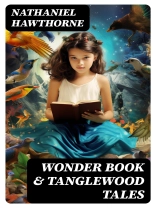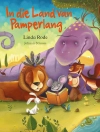In ‘Wonder Book & Tanglewood Tales, ‘ Nathaniel Hawthorne creatively retells classic myths and legends, infusing them with his characteristic dark romanticism and moral depth. These tales, aimed at a younger audience, weave together rich narrative styles and vivid imagery, following a framework that encourages both imaginative exploration and moral contemplation. By recounting stories inspired by Greek mythology alongside original fabrications, Hawthorne not only captivates young readers but also subtly engages them in themes of virtue, consequence, and identity, reflecting the complexities of human experience in a whimsical yet profound manner. Nathaniel Hawthorne, a central figure in American literature, emerged from a transcendental environment influenced by the ideas of moral perfection and introspection. His Puritan ancestry and personal struggles with his heritage provided profound insights into human nature, driving his interest in moral storytelling. These factors, combined with his penchant for exploring the darker aspects of the human psyche, ultimately shaped his unique approach in ‘Wonder Book & Tanglewood Tales, ‘ making it not just a children’s book but a work imbued with deeper philosophical inquiries. This collection is highly recommended for readers seeking to instill a love of literature and folklore in the younger generation. It serves not only as an enchanting introduction to mythology but also as a platform for discussing virtue and ethics, making it a valuable addition to any literary repertoire.
About the author
Nathaniel Hawthorne (1804–1864) was an American novelist and short story writer who left an indelible mark on the literary world. Born in Salem, Massachusetts, Hawthorne’s ancestral connection to the Puritanical history of the town, including a judge in the Salem witch trials, profoundly influenced his thematic exploration of sin, retribution, and psychological complexity in his works. He graduated from Bowdoin College in 1825, where he began to develop his craft in writing. Hawthorne’s writing style is characterized by the use of allegory and symbolism, often examining moral conflicts and the dark side of human nature. While he penned many works, ‘The Scarlet Letter’ stands as a monumental contribution to American literature, showcasing his ability to navigate the human psyche within a Puritan setting. Another significant contribution is ‘The House of the Seven Gables, ‘ a story that blends historical and gothic elements, exemplifying Hawthorne’s talent for creating atmospherically rich narratives. His lesser-known, but equally enchanting, works ‘Wonder Book & Tanglewood Tales’ are refashioned tales from classical mythology, designed to bring these stories to the enjoyment of a young audience. In these collections, he employs a conversational style that diverges from his typically denser prose, a testament to his versatility as a writer. Hawthorne’s literary legacy is characterized by his exploration of the intricate contradictions of the human spirit, rendered in prose that is both eloquent and evocative, securing his place as a central figure in the development of American literature.












